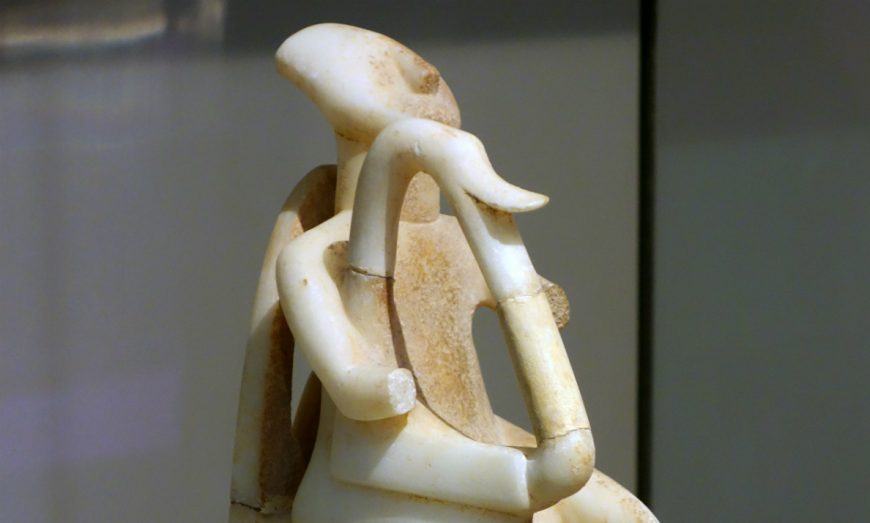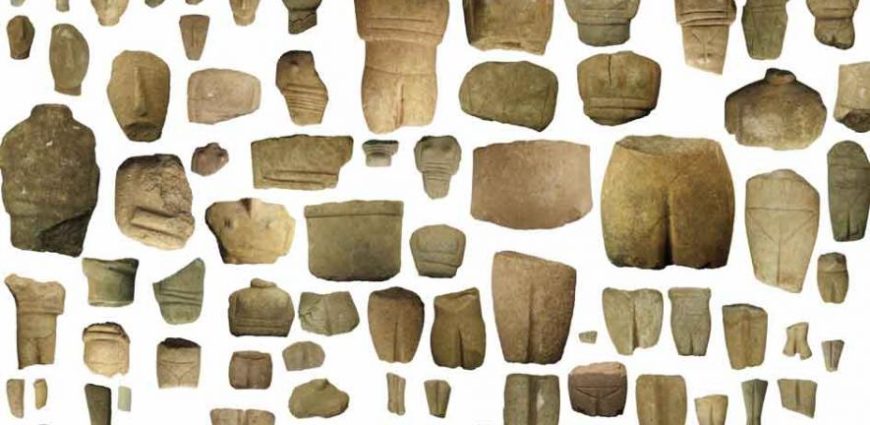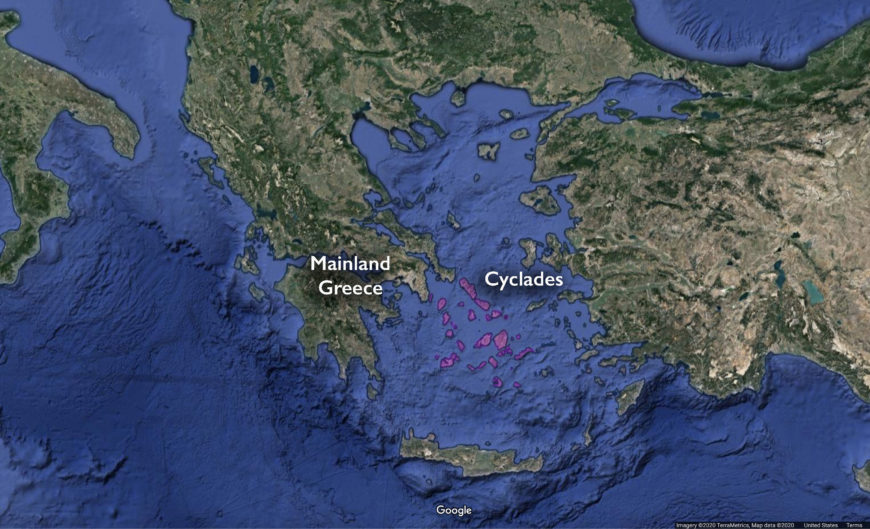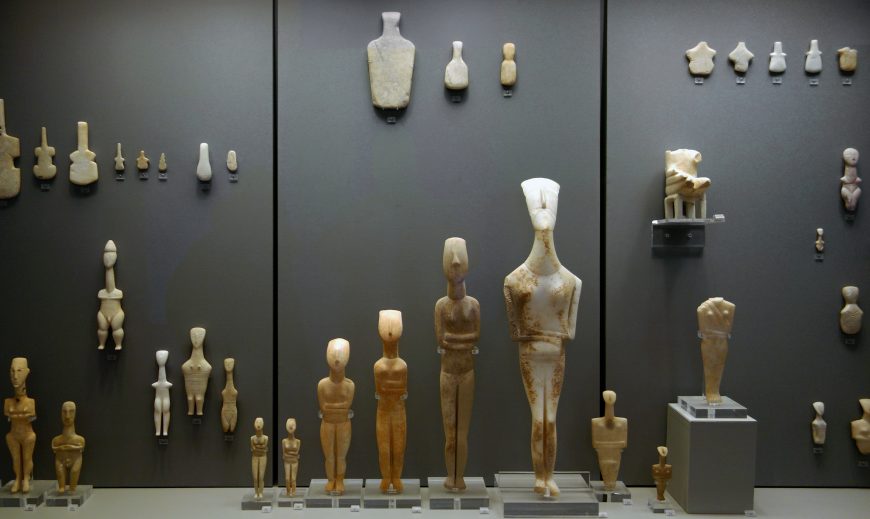The Cyclades (often referred to as the Greek Islands) are a group of islands to the southeast of Mainland Greece in close proximity to one another, so much so, from each island you can nearly always see at least one other. This capacity to see each other, and invite travel between them, resulted in a common culture growing up among these islands in the Early Bronze age (around 3000 B.C.E.). For the next thousand years, until about 2000 B.C.E small farming settlements grew into large towns with neatly built stone buildings. Metal smelting became common and trade flourished with not only the mainland of Greece but also Crete and the Anatolian coast (today, Turkey).

Male harp player from Keros, c. 2600–2300 B.C.E., Early Cycladic period, marble, 22.5 cm high (National Archaeological Museum, Athens)
Found in the tombs
The Early Bronze Age people of the Cyclades had a unique way of burying their dead, in stone slab lined pits, sometimes in two stories. But, what is really remarkable is what has often been found in these tombs: elegantly carved small-scale marble sculptures, nearly all of women, known as Cycladic figurines. These form the first stylistically coherent sculptural type to develop in Europe and have featured prominently in the prehistoric art history of Greece. Several Modern artists were influenced by Cycladic figurines as well, including Pablo Picasso, Constantin Brâncusi, and Amedeo Modigliani.
The use and meaning of these sculptures have been a mystery since their first discovery at the end of the 19th century. The fact that some 75% of Early Cycladic archaeological sites have been looted in search of figurines to sell on the antiquities market hasn’t helped; looting destroys the contextual information which enables us to understand artifacts. However, recent archaeological excavations on the island of Keros, have produced some fascinating information. Specifically, at the site of Dhaskalio-Kavos two large deposits have been found filled with hundreds of figures which were all purposefully broken in the Early Bronze Age before their burial. Archaeologists believe that the site was an important religious sanctuary which drew people from all over the Cyclades.

Broken figurines found during archaeological excavations on the island of Keros (Island of Broken Figurines)
The dynamic early Bronze Age culture of the Cyclades ends abruptly, around 2000 B.C.E., when all settlement sites are abandoned. The reason for this abandonment remains a mystery. People don’t again settle on the islands in large numbers for another two hundred years.
Additional resources:
Early Cycladic Art and Culture on the Metropolitan Museum of Art’s Heilbrunn Timeline of Art History
Marisa Marthari, Colin Renfrew, Michael J. Boyd, eds., Kavos and the Special Deposits: The sanctuary on Keros and the origins of Aegean ritual (Oxbow Books, 2016)
Marisa Marthari, Colin Renfrew, Michael J. Boyd, eds. Early Cycladic Sculpture in Context (Oxbow Books, 2017).



